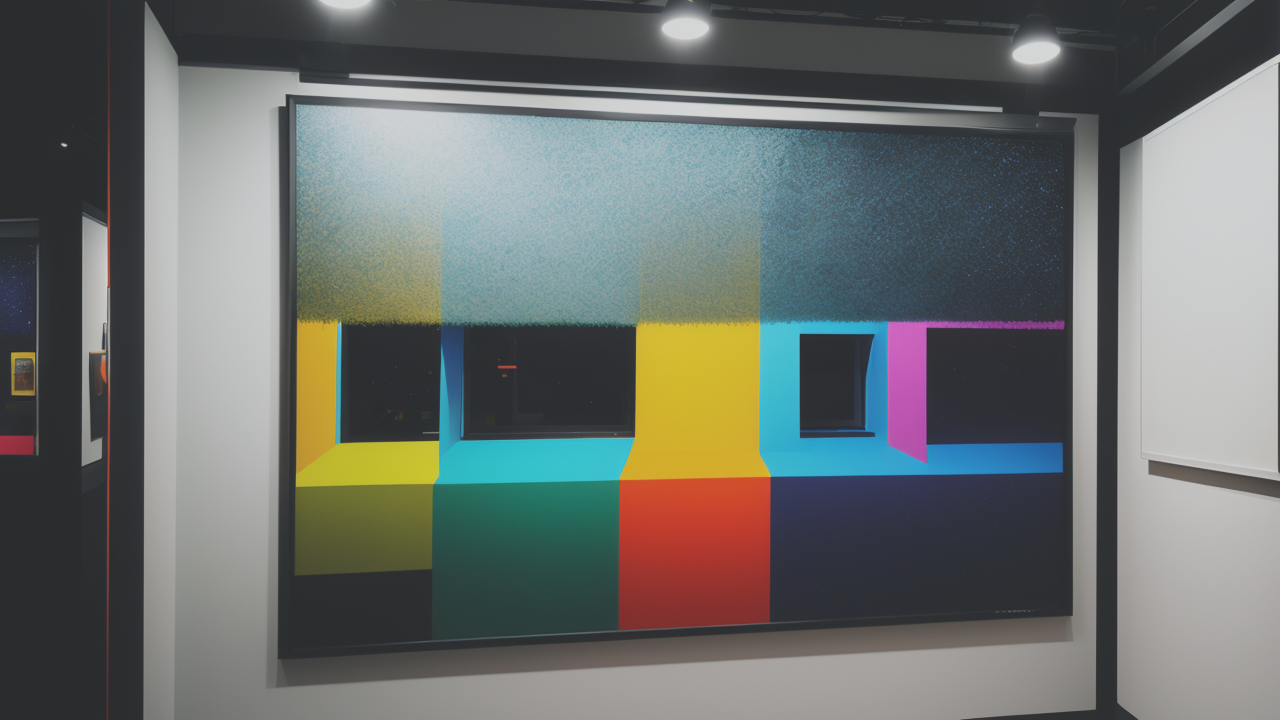
Navigating the Vibrant World of Contemporary Art Events in America
The Rise of Pop Art in the United States: Historical Insights and Trends
Origins of Pop Art: A Brief History
Pop Art emerged in the 1950s as a bold response to Abstract Expressionism. It drew inspiration from everyday objects and popular culture. Artists like Andy Warhol and Roy Lichtenstein led this exciting movement.

They used bright colors and simple designs to create accessible art. Pop Art challenged traditional notions of what could be considered art. It blurred the lines between high culture and mass media.
The movement reflected the post-war consumer boom in America. It captured the spirit of a society becoming more materialistic. Pop Art's use of familiar imagery struck a chord with the public. It made art more relatable and less intimidating.
The 60s and 70s: The Golden Era of Pop Art
The 1960s and 70s saw Pop Art reach its peak popularity. Andy Warhol's Campbell's Soup Cans became an iconic symbol of the movement. Roy Lichtenstein's comic book-inspired works gained widespread recognition.
Other artists like Claes Oldenburg and Tom Wesselmann made significant contributions. Pop Art expanded beyond painting into sculpture, film, and performance art. Warhol's Factory became a hub for creative experimentation.
The movement's influence spread globally during this time. British artists like Richard Hamilton added their unique perspectives. Pop Art's bold style and cultural commentary resonated worldwide.
Current Trends: How Pop Art is Shaping Modern Contemporary
Today, Pop Art continues to influence modern contemporary art. Its legacy is evident in the works of artists like Jeff Koons and Takashi Murakami. These artists blend pop culture with fine art techniques.
Digital technology has given Pop Art new life. Artists now use social media and digital platforms to create and share work. This has led to new forms of Pop Art that reflect our digital age.
Pop Art's focus on consumerism and mass media remains relevant. Today's artists use these themes to comment on current social issues. The movement's spirit of challenging art world norms continues to inspire new generations.
The Impact of Pop Art on Modern Contemporary Culture
Influence on Visual Media and Advertising
Pop Art has left a lasting mark on visual media and advertising. Its bold colors and simple designs are now common in ads and branding. Many companies use Pop Art-inspired imagery to make their products stand out.

The movement's influence is seen in graphic design, packaging, and digital media. Pop Art's style makes messages clear and memorable. This is crucial in today's fast-paced, image-driven world.
Advertisers often use Pop Art techniques to create nostalgic or ironic ads. This helps brands connect with younger audiences. Pop Art's ability to blend high and low culture is valuable in marketing.
The Role of Pop Art in Consumer Culture
Pop Art has shaped how we view and interact with consumer culture. It turned everyday objects into art, changing our perception of value. This has influenced product design and marketing strategies.
The movement both celebrated and critiqued consumerism. This dual nature is still relevant in today's consumer-driven society. Pop Art's legacy encourages us to think critically about what we buy and why.
Many brands now collaborate with artists to create limited-edition products. This blurs the line between art and commerce, a core concept of Pop Art. The movement's influence on consumer culture continues to evolve.
Collaborations Between Pop Artists and Contemporary Artists
Collaborations between Pop artists and contemporary artists are becoming more common. These partnerships create exciting new works that blend different styles and ideas. They often result in pieces that are both visually striking and thought-provoking.
Many contemporary artists draw inspiration from Pop Art's techniques and themes. They update these ideas for modern audiences. This creates a dialogue between past and present art movements.
These collaborations often extend beyond the art world. Pop-inspired artists work with fashion designers, musicians, and filmmakers. This cross-pollination of ideas keeps Pop Art relevant and evolving.
The Future of Pop Art in the Context of Modern Contemporary
Predicting the Next Wave of Pop Art
The future of Pop Art will likely be shaped by current cultural trends and technologies. We may see more digital and interactive Pop Art experiences. Virtual and augmented reality could offer new ways to engage with Pop Art concepts.

Environmental concerns might lead to a 'Green Pop Art' movement. This could use recycled materials or focus on sustainability themes. Pop Art's ability to comment on society will remain crucial.
As global cultures mix more, Pop Art might become more diverse. It could incorporate elements from various cultural traditions. This would create a more inclusive and varied Pop Art landscape.
The Role of Technology and Social Media
Technology and social media are transforming how Pop Art is created and shared. Artists can now reach global audiences instantly. This has democratized art creation and distribution.
Social media platforms have become new canvases for Pop Art. Memes and viral content share similarities with Pop Art's use of popular imagery. Artists are exploring how to create meaningful work in this fast-paced digital environment.
AI and machine learning might lead to new forms of Pop Art. These technologies could generate art based on current trends and data. This raises questions about authorship and creativity in the digital age.
Potential for Pop Art in Evolving Marketplaces
Pop Art has always had a close relationship with commerce. In evolving marketplaces, this connection is likely to grow stronger. We might see more Pop Art in digital marketplaces, including NFTs and virtual goods.
The movement's accessibility makes it well-suited for new forms of art ownership. Fractional ownership and art-backed tokens could make Pop Art more attainable for average consumers.
As brands seek to engage customers in new ways, Pop Art could play a key role. Its ability to create memorable, shareable imagery is valuable in today's attention economy. The future of Pop Art in marketplaces looks bright and innovative.


